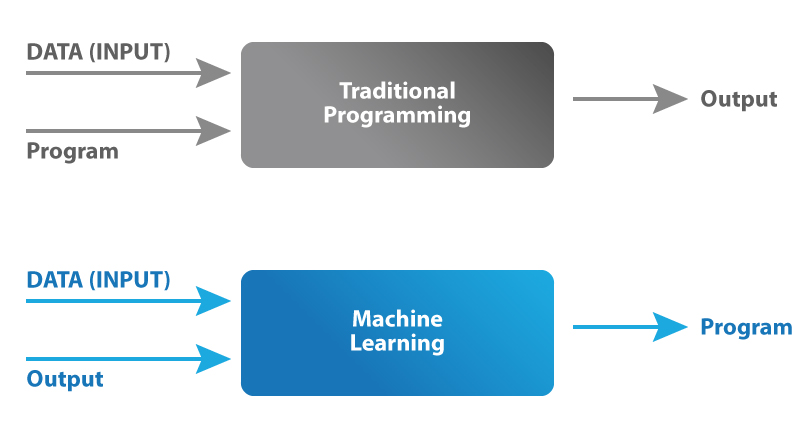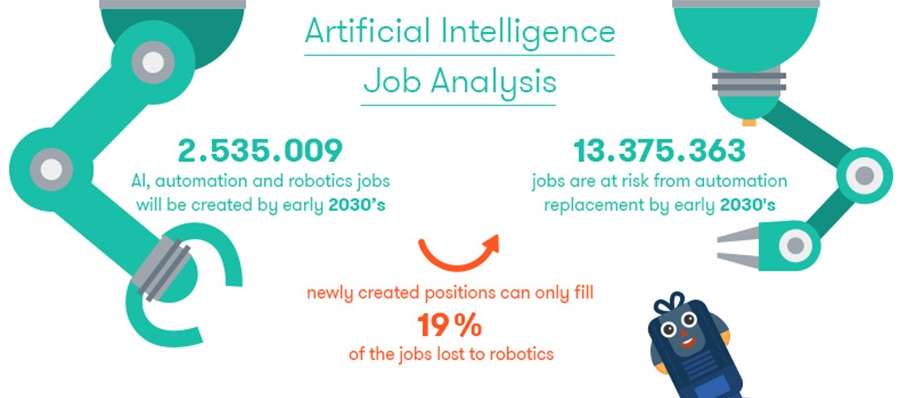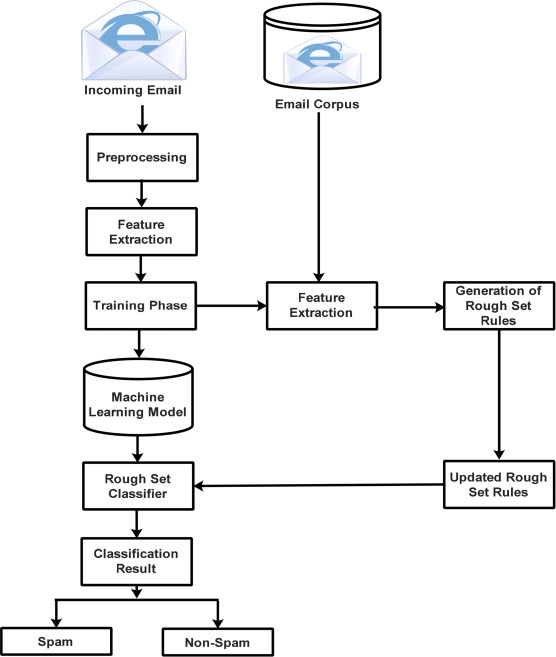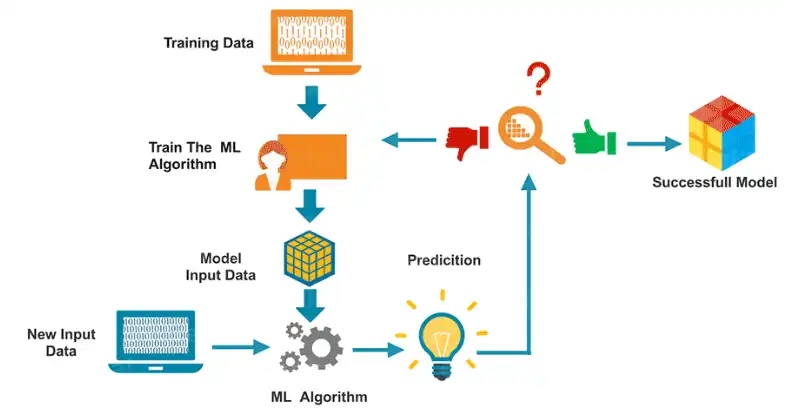Comments
- No comments found

By harnessing the power of machine learning, organizations can streamline processes, allowing workers to refocus their time on the work that truly matters.
The average employee spends around four hours a day on administrative tasks, such as answering emails, scheduling meetings, and managing their workload.
While these tasks are essential, they can be time-consuming and take away from more critical work responsibilities. Machine learning has the potential to automate many administrative tasks, freeing up employees to focus on more strategic work. In this article, we will explore how machine learning can help employees focus on their work by answering administrative emails, with real-world examples.

Machine learning is a subset of artificial intelligence that involves teaching computers to learn and improve from experience without being explicitly programmed. In essence, machine learning algorithms learn from data and make predictions or decisions based on that data. Machine learning can be used for a wide range of applications, including email management.
Machine learning is a type of artificial intelligence (AI) that enables computers to learn from data and improve their performance on specific tasks over time. Here is a brief overview of how machine learning works:
Data Collection: The first step in machine learning is to collect data. This can be any type of data, such as text, images, or numerical data. The data should be relevant to the problem you're trying to solve and should be representative of the real-world scenarios the model will encounter.
Data Preprocessing: Once you have collected the data, you need to preprocess it to prepare it for use in a machine learning algorithm. This may involve cleaning the data, removing irrelevant features, and transforming the data into a format that can be used by the algorithm.
Model Selection: There are many types of machine learning algorithms, and selecting the right one for your problem is important. Some common types of algorithms include decision trees, neural networks, and support vector machines. The selection process depends on the type of data you have, the problem you're trying to solve, and the performance metrics you're targeting.
Training the Model: Once you've selected a model, you need to train it on your data. This involves feeding the algorithm your preprocessed data and allowing it to learn from the patterns and relationships in the data. During training, the model adjusts its parameters to minimize errors and improve its accuracy.
Evaluation: Once the model has been trained, it's important to evaluate its performance. This involves testing the model on a set of data that it hasn't seen before and measuring its accuracy, precision, recall, and other performance metrics. If the model isn't performing well, you may need to adjust the model or collect more data to improve its accuracy.
Deployment: After the model has been trained and evaluated, it's time to deploy it. This involves integrating the model into your application or system so that it can be used to solve real-world problems.
Monitoring: Finally, it's important to monitor the performance of the model over time. This can help you identify issues or opportunities for improvement and ensure that the model is still performing well on new data.
Machine learning is a powerful tool that enables computers to learn from data and improve their performance over time. By understanding how machine learning works, you can apply it to a wide range of applications and solve complex problems more efficiently and accurately.

Administrative tasks, such as email management, can be time-consuming and take away from more critical work responsibilities. By automating these tasks with machine learning, employees can focus on more strategic work, such as developing new products or services, improving customer experiences, or driving revenue growth. Machine learning can help employees focus on their work by:
Machine learning can automate repetitive tasks, such as answering routine emails or scheduling meetings, freeing up time for more critical work.
It can also analyze large volumes of data to identify patterns and trends, improving the accuracy of email responses and reducing errors.
Machine learning algorithms can learn from past email interactions to automate responses to similar emails in the future, improving efficiency and reducing response times.

There are several examples of machine learning applications in email management. Here are a few examples:
Smart Reply by Google is an AI-powered feature that suggests responses to emails. When a user receives an email, Smart Reply analyzes the email's content and provides several suggested responses that the user can choose from. Smart Reply uses natural language processing (NLP) and machine learning algorithms to generate responses that are relevant and personalized to the email's content.
X.AI is an AI-powered virtual assistant that helps schedule meetings. When a user wants to schedule a meeting, they can copy X.AI on the email thread, and X.AI will take over the conversation. X.AI uses NLP and machine learning algorithms to understand the context of the email conversation and find a mutually convenient time for the meeting.
Salesforce Einstein is an AI-powered platform that integrates with Salesforce to automate customer interactions. Einstein can analyze customer emails and provide suggested responses that are personalized to the customer's needs. Einstein can also automate follow-up emails and provide insights into customer behavior and preferences.

Implementing machine learning in email management can be a powerful tool for increasing efficiency, improving accuracy, and reducing manual labor. Here are some best practices to consider when implementing machine learning in email management:
Clearly define the problem: Before starting any machine learning project, it's important to clearly define the problem you're trying to solve. For email management, this could include tasks such as spam filtering, email routing, or sentiment analysis.
Collect and preprocess data: Machine learning algorithms require large amounts of data to learn from. In the case of email management, this could include email content, metadata, sender information, and more. Once you've collected the data, it's important to preprocess it to ensure it's clean, consistent, and ready for machine learning.
Select appropriate algorithms: There are many machine learning algorithms available, each with its own strengths and weaknesses. Select the appropriate algorithm(s) based on the problem you're trying to solve, the data you have, and the performance metrics you're targeting.
Train and test the model: Once you've selected the algorithm(s), it's time to train and test the model. Split your data into training and testing sets, and use the training data to train the model. Then, use the testing data to evaluate the model's performance and make any necessary adjustments.
Monitor and evaluate performance: Machine learning models are not static, and their performance can degrade over time. It's important to continuously monitor and evaluate the model's performance, and make any necessary adjustments as new data becomes available.
Incorporate human oversight: While machine learning can be incredibly powerful, it's not perfect. Incorporate human oversight to review and correct any errors made by the machine learning algorithm.
By following these best practices, you can implement machine learning in email management to increase efficiency, accuracy, and reduce manual labor.
Machine learning has the potential to transform email management, freeing up employees to focus on more strategic work. With AI-powered features such as Smart Reply by Google, X.AI, and Salesforce Einstein, employees can automate routine tasks, such as answering emails and scheduling meetings. However, it is important to approach machine learning with caution and to follow best practices when implementing it in email management. By starting small, using high-quality data, focusing on user experience, and monitoring performance, organizations can maximize the benefits of machine learning while minimizing its risks.
Machine learning can help employees focus on their work by automating administrative tasks such as email management. With the increasing adoption of machine learning in business, it is crucial for organizations to explore and leverage its potential to improve efficiency, accuracy, and productivity. By embracing machine learning, organizations can enhance their employees' experience, improve customer satisfaction, and gain a competitive advantage in the marketplace.
Leave your comments
Post comment as a guest